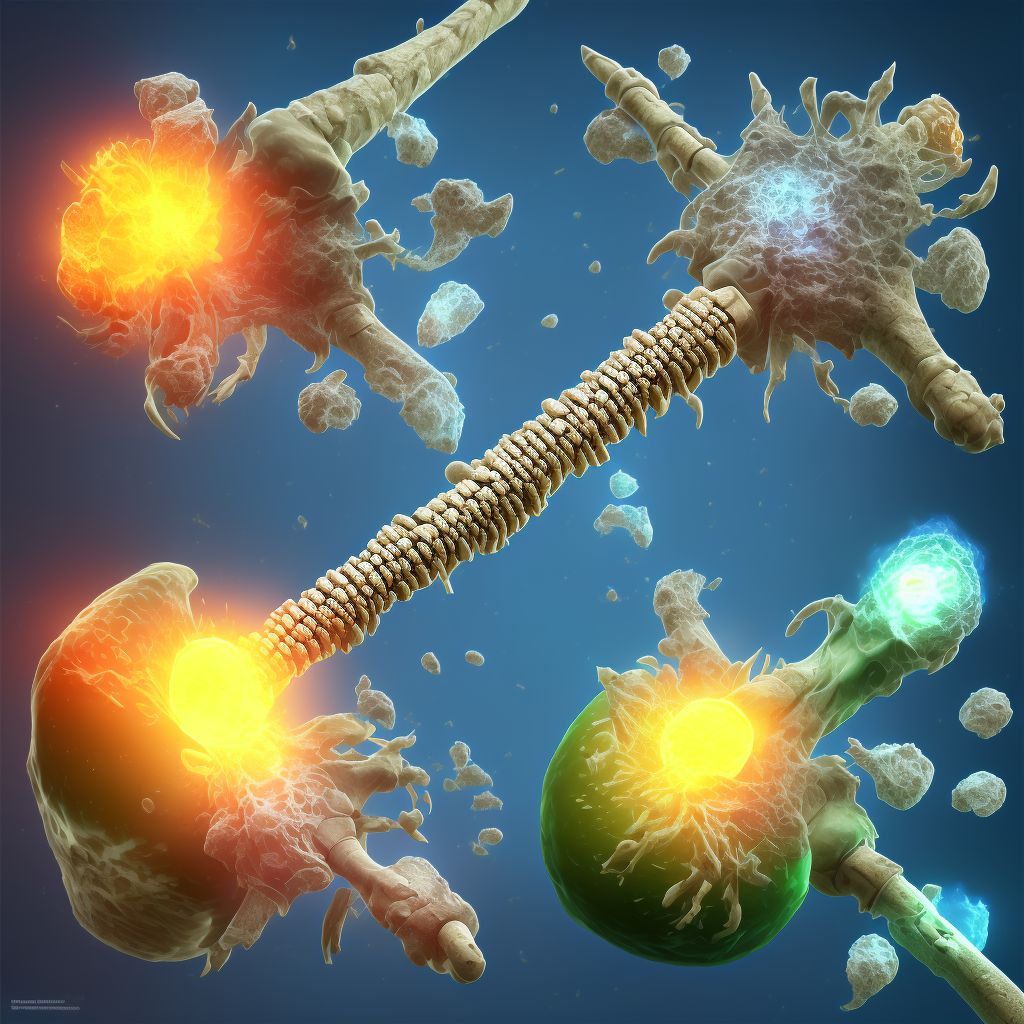
Nondisplaced segmental fracture of shaft of right tibia, subsequent encounter for closed fracture with nonunion Save
ICD-10 code: S82.264K
Disease category: S82.264: Nondisplaced segmental fracture of shaft of right tibia
Nondisplaced Segmental Fracture of Shaft of Right Tibia: Understanding Nonunion
A nondisplaced segmental fracture of the shaft of the right tibia refers to a type of bone break that occurs in the long bone located in the lower leg. In this case, the fracture does not result in any significant displacement of the bone segments. This condition is commonly encountered in medical practice and requires careful management to prevent potential complications.
Nonunion refers to the failure of a fractured bone to heal within the expected timeframe. In the context of a nondisplaced segmental fracture of the right tibia, nonunion can occur despite initial treatment and immobilization. It is essential to address nonunion promptly to minimize pain, restore function, and prevent long-term complications.
- Causes of nonunion: Several factors can contribute to the development of nonunion, including inadequate blood supply to the fracture site, infection, poor nutrition, smoking, and excessive movement of the fracture fragments.
- Symptoms: Patients with nonunion may experience persistent pain, swelling, tenderness, and difficulty bearing weight on the affected leg. These symptoms can significantly impact daily activities and quality of life.
- Diagnosis: To diagnose nonunion, a thorough physical examination, medical history review, and imaging tests such as X-rays or CT scans are essential. These diagnostic tools help assess the stability of the fracture and the extent of nonunion.
- Treatment options: Treatment for nonunion of a nondisplaced segmental fracture of the right tibia typically involves a multidisciplinary approach. Orthopedic specialists may recommend surgical interventions such as bone grafting, internal fixation, or external fixation to promote bone healing and stability.
- Prevention: Preventive measures can help reduce the risk of nonunion. These include early and appropriate fracture management, maintaining good nutrition, avoiding smoking, and following the healthcare provider's instructions for weight-bearing restrictions and physical therapy.
Overall, a nondisplaced segmental fracture of the shaft of the right tibia with subsequent nonunion requires careful evaluation and management. Prompt diagnosis and appropriate treatment options can enhance the chances of successful bone healing and minimize long-term complications.
Treatment of Nondisplaced segmental fracture of shaft of right tibia, subsequent encounter for closed fracture with nonunion:
Treatment Options for Nondisplaced Segmental Fracture of Shaft of Right Tibia, Subsequent Encounter for Closed Fracture with Nonunion
A nondisplaced segmental fracture of the shaft of the right tibia, subsequent encounter for a closed fracture with nonunion, can be a challenging condition to treat. However, with the right treatment options, patients can experience significant impro...
To see full information about treatment please Sign up or Log in